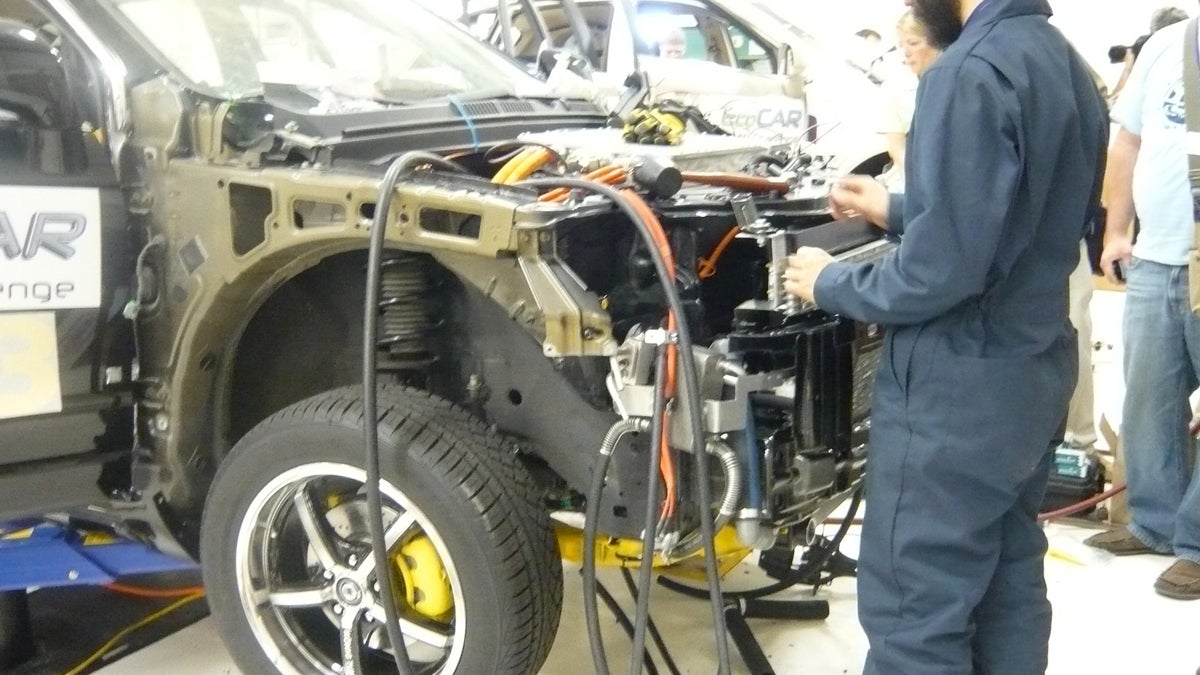Peeking under the hood at the EcoCar Challenge
On May 20, I visited GM's Desert Proving grounds in Yuma, Arizona as the teams prepared to test their vehicles in the second stage of the competition. Seeing these modified SUVs in various stages of undress and watching students racing to troubleshoot and reassemble their vehicles like young NASCAR pit teams, I quickly realized that my college experience was a waste of time.

It's hard enough building an electric car from the wheels up, carefully selecting lightweight materials and creating an efficient yet robust power train with commercial appeal. But it's arguably tougher to take a stock approximately 4,000-pound hybrid SUV, remove its internal bits, design and squeeze in alternate components not designed for automotive uses around an existing infrastructure, put everything back together, and hope it passes a 300-point safety check.
Now try tackling all this during finals.
As part of the GM's EcoCar Challenge, a program sponsored in conjunction with the Department of Energy and several automotive suppliers, 16 university teams of undergraduate and graduate students are competing in a three-year competition to plan, develop, and refine an alternative fuel SUV that meets commercial and consumer standards.
Competing for more than $100,000 in prizes each year, teams are required to replace the SUV's existing hybrid engine and transmission with an extended-range, plug-in electric, fuel-cell, or all-electric power train using their choice of B20, E85, or liquid hydrogen fuel. The vehicles are judged on fuel economy, well-to-wheel emissions reduction, performance, and towing, to name a few factors.
On May 20, I visited GM's Desert Proving grounds in Yuma, Arizona as the teams prepared to test their vehicles in the second stage of the competition. Seeing these modified SUVs in various stages of undress and watching students racing to troubleshoot and reassemble their vehicles like young Nascar pit teams, I quickly realized that my college experience was a waste of time.
My biggest accomplishment in college involved a bad rendition of Minesweeper, albeit with poorer graphics and less functionality. But these students are using the same tools as GM engineers to model and build a fully functioning alternative fuel vehicle that can tow 1,500 pounds while explaining at a dizzying pace how the vehicle works.
Most college students I knew couldn't change a tire, let alone an entire vehicle propulsion system. An hour into the garage tour, I gave up trying to pretend that I understood what they were talking about and stuck to questions my brain could handle, like "What's your major?" (typically mechanical or electrical engineering) and "What do you want to do after college?" (most common response: get a job).
And it's a worthwhile effort on GM's part, especially considering that the car manufacturer doesn't get a lot of press for this type of program. GM's Aaron Sullivan, lead engineer for electric vehicle program explains that it's all part of a plan to get students excited about automotive engineering and give them the tools to hit the ground running. But it's also not a bad way for the carmaker to recruit future engineers.
Front-runner Mississippi State won first place overall this year, with its EREV hybrid equipped with a 1.3-liter GM turbodiesel engine and a 21.3kWh A123 Systems battery pack, achieving an electric range of 60 miles and a 118 mpg gas equivalent (combined city/highway cycle). Virginia Tech came in second, and Penn State took third place. Next year, students will focus on optimizing and refining their prototypes.

